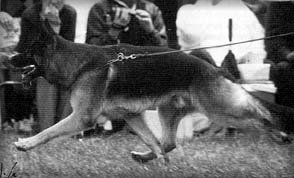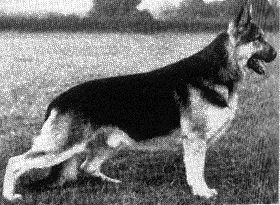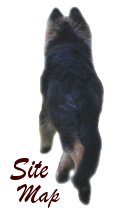Examples of GSDs
in the United Kingdom
An English Type Alsation in the UK:
Level top line - heavier type.

Mikeadene Highlander (owned
by Mike and Dina of Mikeadene Alsations)
2 Res CC's (Two Reserve Challenges)
A Germanic Type Alsation in the UK:
Some breeders in the UK
choose to still follow the German "blueprint".
I have been told that the German type GSD is more popular in the UK.
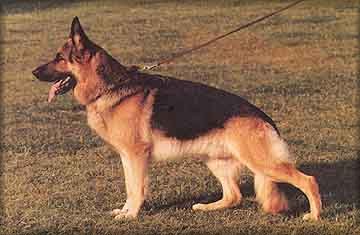
Ch. Shootersway Lido (owned
by Roy and Clarissa Allan)
Best of Breed winner at Crufts in 1987.
***
|
On the
move with a UK Champion with West German lines ... |
British Schutzhund Association
For a complete list of clubs in the UK, visit Videx GSDs.
VA Jalk vom Fohlenbrunnen - 1963 Vice Sieger Herr Walter Martin of
Wienerau Kennels states: " Dixie in combination with Jalk Fohlenbrunnen gave me
the "L" litter Wienerau, and all the dogs Colonel William F. Gish
states: "JALK VOM FOHLENBRUNNEN, SchH III, AD, was the dog March/April 1999 "Schutzhund USA" shows a picture of Jalk Fohlenbrunnen. The caption states: "Considered one of the most correct dogs in history". "The Essential German Shepherd Dog" by Roy and Clarissa Allan states: "Jalk was a very well constructed dog of excellent substance and appearance, very suggestive of the Shepherds we see in the rings today; considerable harmony of lines, with no exaggeration. There is a colour paling factor which allegedly comes from Jalk, but wherever this comes from, the fact is that the progeny of Jalk were noted as showing colour paling to some degree." Louis Donald (SV Judge and
President of the Australian National GSD council gives his comparison to the English type,
comparing Jalk to an English counterpart of that time (the 1960's) called Fenton of
Kentwood - UK: The UK's Fenton of Kentwood |
***
East German Show Lines:
The DDR Wertmessziffer Rating System or Breed Survey System can be found here. |
Thank you Teri Rosgaard and Nancy Sutton. |
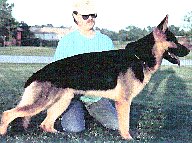 |
Baldo vom
Wolkenstein SchH3 - (1989 DDR Sieger) |
| Flex vom blauen Modeneser SchH3 | 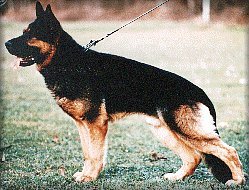 |
Thank you Teri Rosgaard.
The East German DDR German Shepherd Dog Page
Czechoslovakian Lines ...
The Czech system for the Breed Survey can be found here. |
Thank you John Paver for providing this information. |
| V Aron ze Zdenkovo dvora SchH3 KKL1 | 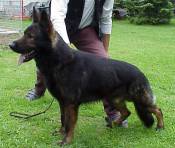 |
***
Controversial Links of Interest:
Still Arguing About The Standards?
Balance Problems with the American Show German
Shepherd
By Jean Mueller
German Bloodline Dog's vs. American Bloodline Dogs - Why buy Working Bloodlines
Some More
German Shepherd Types:
The German High
Lines or Show Lines
Various Working Lines
The DDR/Czech Lines
The North American Show
Lines
The Long Haired German
Shepherd
The White German Shepherd
German
Shepherds Of The United Kingdom
![]()
